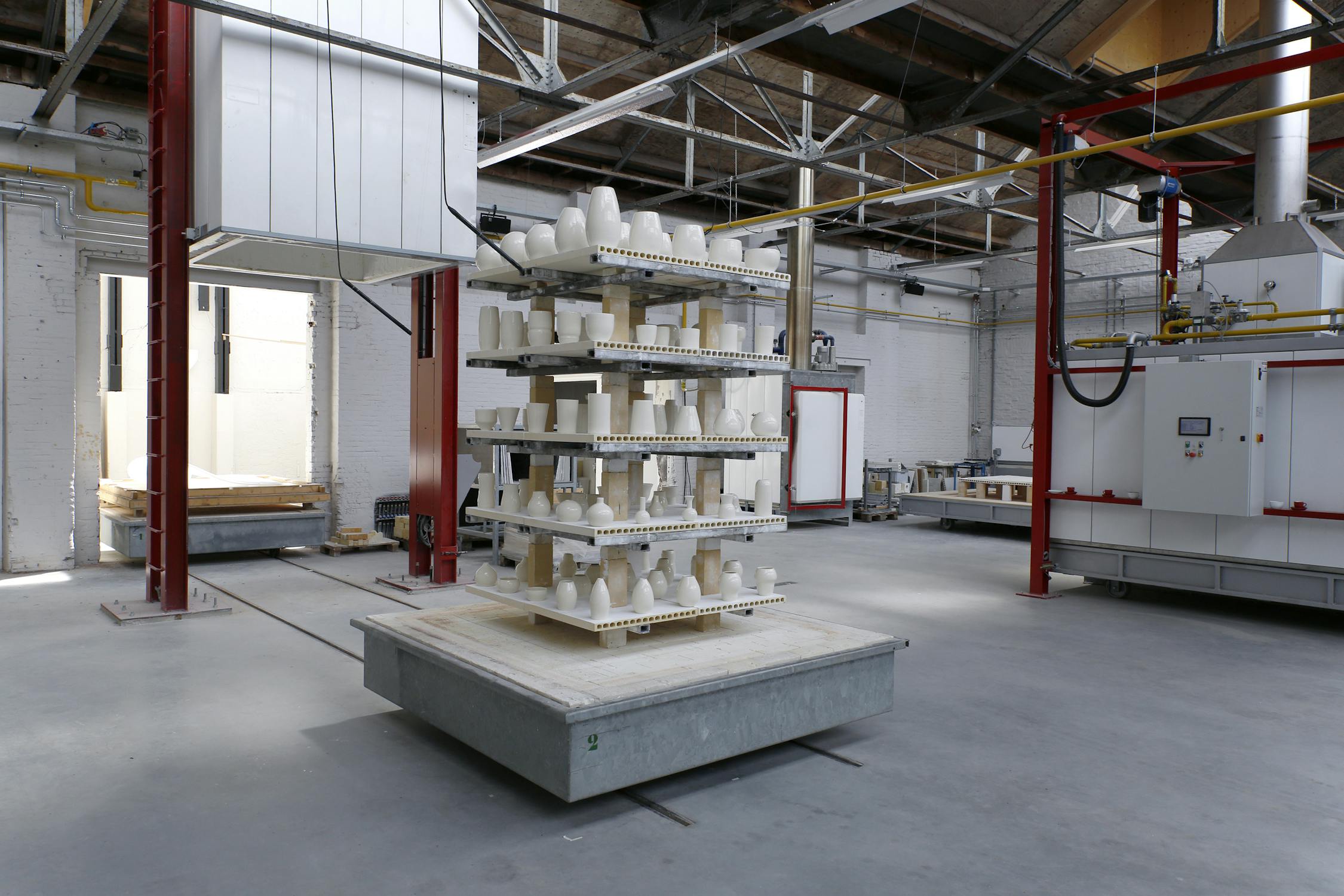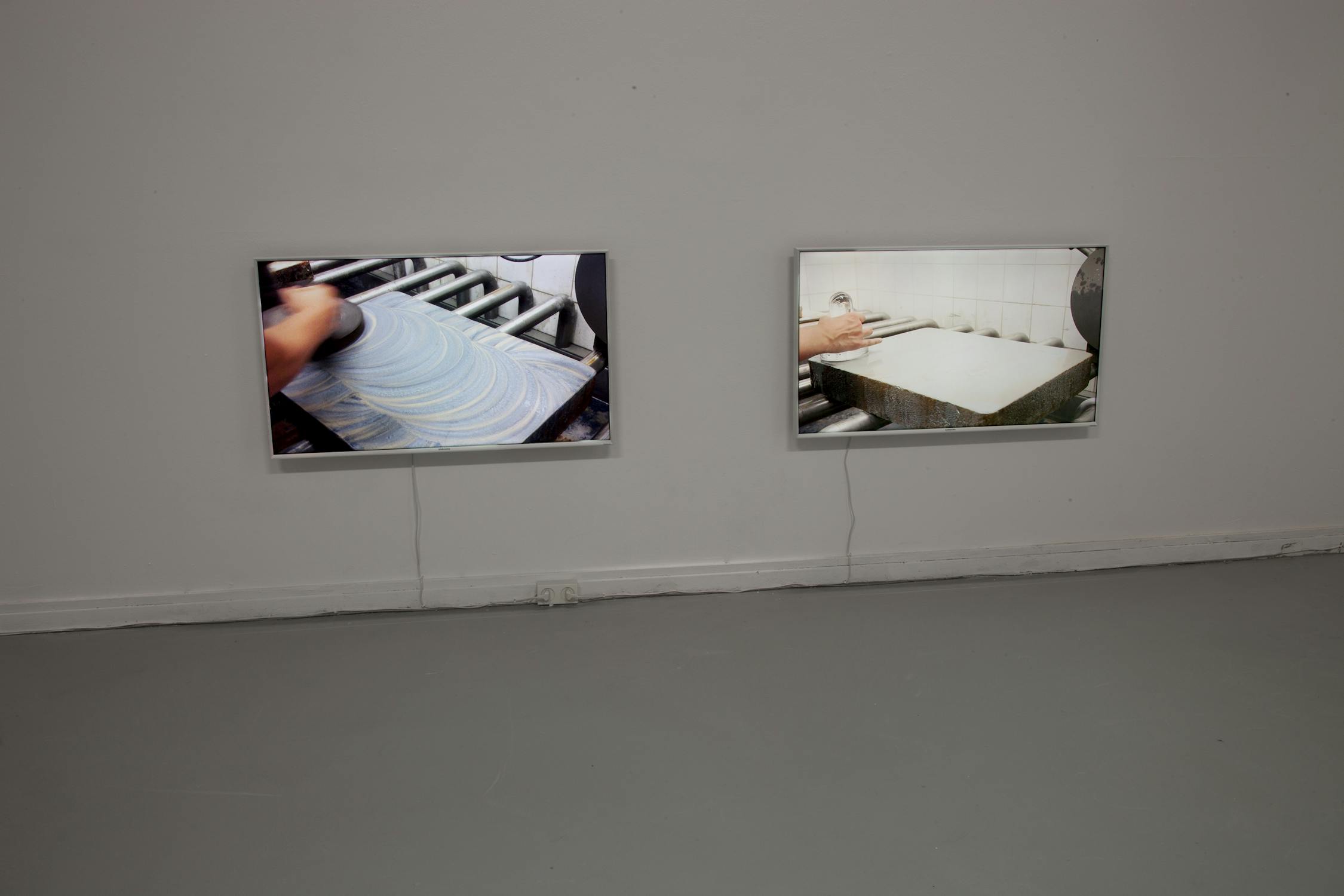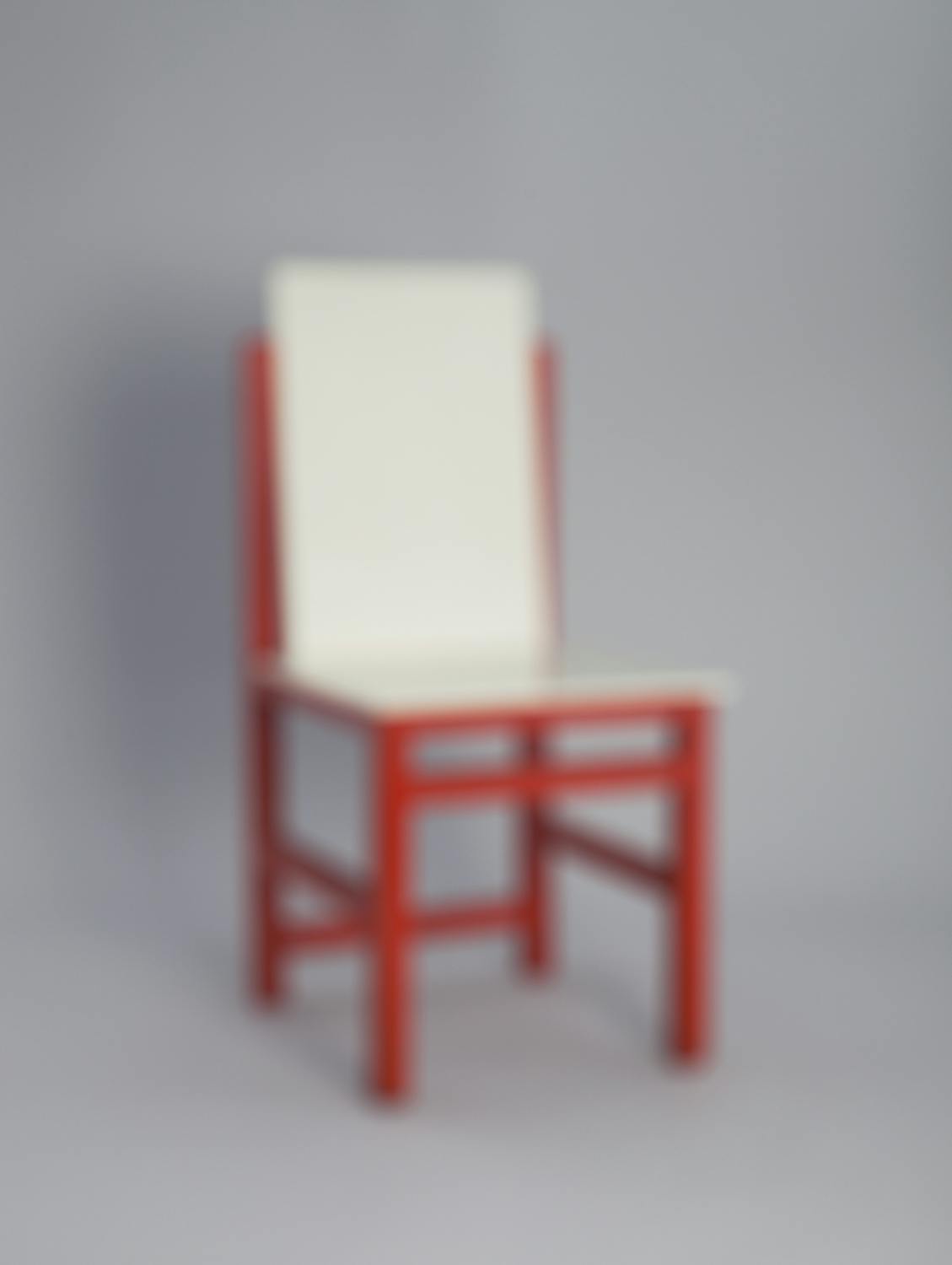Work: Would you tell me
Type: Q&A
By: Namita Wiggers
For: GICB (Korean International Ceramic Biennale)
Year: 2017
Questions to Paulien Barbas;
Your work calls attention to the materiality of clay and the physicality of tools and equipment, particularly in this piece accepted into the International Exhibition. You seem to be working as a collaborator with the material and tools -- rather than acting on clay you seem to act with the material and processes. Is this a read of your work that you agree with? Why or why not?
Yes it is, thank you for defining it so well. Isn't it great that material gives you something back? By taking the material as an autonomous entity, helping it to perform, there is space left for movement. Movement is a quality I consider important in my work (and life). It's also a quality which I like to act with instead of against, leaving for small miracles to occur on the way.
I am curious about the process leading to the creation of this piece in that it calls attention to aspects of ceramic production that are known to artists -- but rarely, if ever, incorporated into work for exhibitions. Can you share a bit about the experiences and observations that led to the creation of this piece? Specifically, when and how did the sound of fired ceramic pots first catch your attention, and how did you engage the materials and tools as collaborators in the process?
It was in a ceramic workshop that I first heard the sound of crackling pieces, and I was stunned. It was crazy to me that these firm and lifeless pieces made such a fragile and intense sound. A sound that was moreover the result of liveliness and movement. Qualities that I experienced while working with wet clay, but which up to that point seemed far away when a piece was fired. A bit dumbfounded by the surprise I kept the sound sitting on my desk for a few month, where it didn't want to let me go.
Then the process started. How could I bring forth this negligible and modest sound and pass on the magic it expelled on me? Or in other words, how could I make it large enough, but keep its core which is very small. For the answer I get back to the last part of your question about the materials and tools as collaborators in the process. Because my collaborators (materials and tools) agreed to perform most of the work for me, the movement, which is essential to me, didn't need to stop. I was convinced to show the sound for what it is, as all the magic is in there as such.
I am curious about your process -- particularly trial and error, experimentation, and the relationship between the shape of the vessels and the sounds. How much came from the pots and glaze simply doing what they do -- and how much from your control of form and quantity of objects?
It's nice you mention trial and error, as the sound of crackling glaze is of course usually considered an error in itself. In the work I wanted to create space for this fault to become something else. During the process I tested types of clay, glazes, kiln temperatures, wall thickness and shapes for their influence on the crackling sound. I concluded these aspects need precision, but not full regimentation. All forms perform a sound according to their shape, but I like to see something else as well: the visual sequences of shapes assembling into a certain dance or score. This score of shapes was my visual input to a process I couldn't fully have, nor wanted to have, in control.
The performative nature of the piece -- and its location in the kiln itself -- raise challenges for connecting the work in exhibitions. As a result, your work in this and your other projects, is contingent on photography and video to document and display experiences
--both personal and shared. How does your reliance on photography and video connect with your attention to materiality, equipment and process?
My background is in photography (my specialization at The Rietveld Art Academy). As a result photography and video are not only often the outcome of my work but also shaped my awareness of passing and seemingly trivial moments. My interest has always been with movement and change and I use the medium to retain moments that would otherwise be intangible and/or invisible. My overall interest goes out to loops of thought, the focus of an idea and change of direction by unexpected forces. Perceptions that are by nature intangible. In the last few years I consolidated the idea that my engagement with matter in combination with a recording device (and my role as observer) could preserve these moments and hold an esthetic of its own.
Namita Gupta Wiggers is an artist, curator, educator, and writer based in Portland, Oregon, USA.
Work: Would you tell me
Type: article
By: Sanneke Huisman
For: Metropolis M magazine Nr. 5. The Ceramic Turn
Year: 2015
The sound of ceramics
Although photography forms the basis of Paulien Barbas' work, ceramics have become part of it in recent years. In her artistic practice she often focuses on the moment when something new arises as a result of accidental mistakes or distortions of something existing. The malleability of clay attracts Barbas: 'It can be anything, but it is in fact nothing.' Combining ceramics with photography and video makes it possible to maintain the flexibility of the material. At the EKWC, Barbas is currently researching the sound of crackling glaze, a sound that arises when the clay and the glaze still have to conform to each other after firing. ‘If everything goes well, it is quiet, but sounds of crackling objects can often be heard for days.' A mistake forms the starting point for a work in which different types of clay were tested for sound, appearance and rhythm. The result will be seen and heard at the reopening of the EKWC.
Sanneke Huisman is a writer, art critic and curator based in the Netherlands.
Work: Would you tell me
Type: e-mail
By: Paulien Barbas
For: M
Year: June 2016
Hello M,
For the title I think of: 'Would you tell me'.
She picked up the jar, looked at the fault lines, and said even she wouldn't do that much for love. This much! The glaze and the clay try their best to belong together, to match. She slammed the door earlier that day. The argument was about spilled water on the carpet. Water dries right? So you won't see anything anymore, will you? Two hours later there was the sound of a new mail. Ping. A photo of the carpet, the stain she'd left was shaped like a heart.
In between the kitchen and my studio people want to tell their story. This often concerns grain sizes and kiln temperatures. The jars sure won't listen, but they are modest. Yesterday I heard someone mumble 'do you want to say something else'. The question was meant for a jar and I wonder if my title is too obvious.
At the same moment the openings of the pots changed their shapes to match the title of Maria's text for the booklet. O. Of course they already had, but now I know and maybe you already knew.
Love,
Paulien


